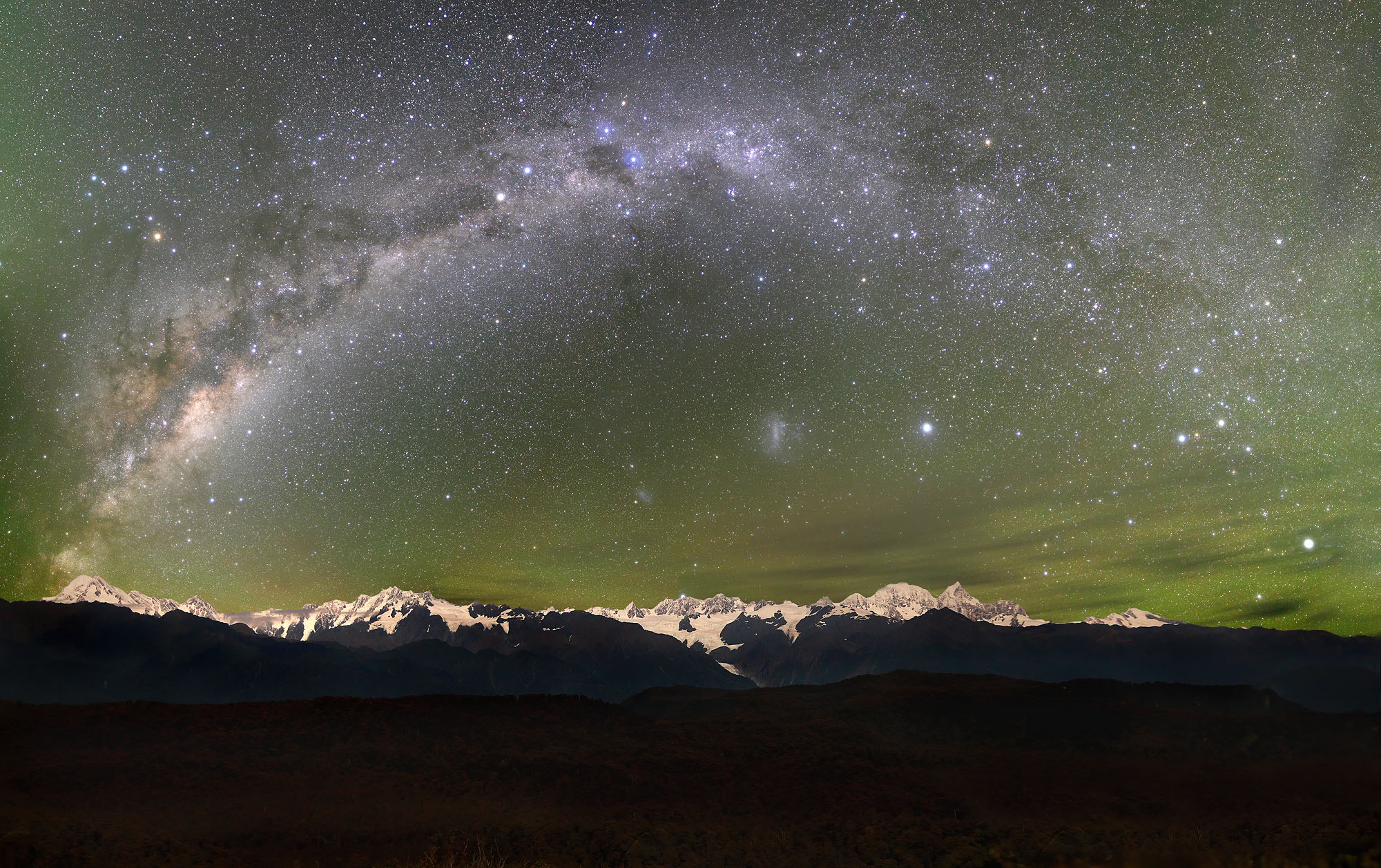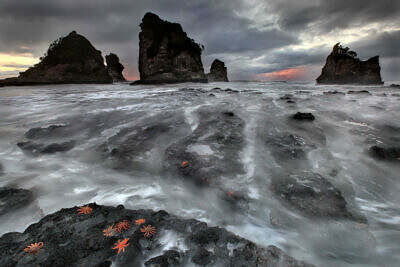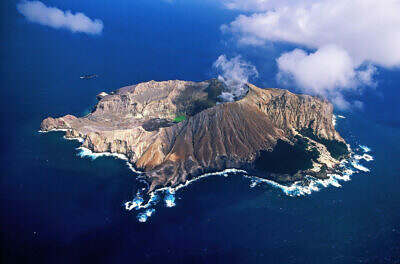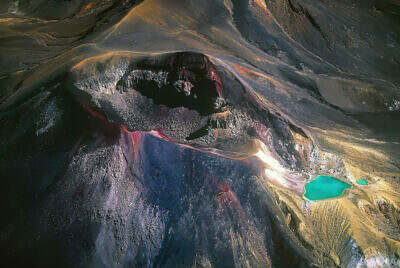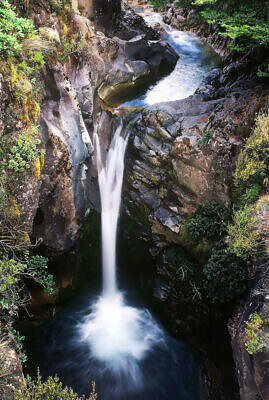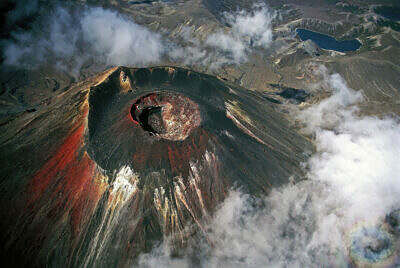The ethereal glow of green southern lights, the Aurora Australis, envelops the arc of the Milky Way over the New Zealand Alps in an enchanting light. Thin cirrus clouds contrast darkly against the glowing night sky while the snow-covered peaks of the Southern Alps with Mt. Cook and Mt. Tasman are illuminated by the first light of the rising crescent moon.
In order to capture this three-dimensional panorama, the scenery comprises 200° in the horizontal and 110° in the vertical. This required 20 individual 14 mm exposures, ten of which were star field images with star tracking of six minutes exposure each and ten equally long exposures of the Alpine landscape shortly after moonrise. Thus, the shooting of this 106 megapixel photo including the calibration and alignment of the astronomical tracking system took seven hours.
-
The arc of the Milky Way with the aurora over the New Zealand Alps
Keep Chasing a Dream
- Starscape
- Ring of Fire
- Tongariro
- Flow, River of my Soul
- Ngauruhoe
- The Whisper of the Rocks

